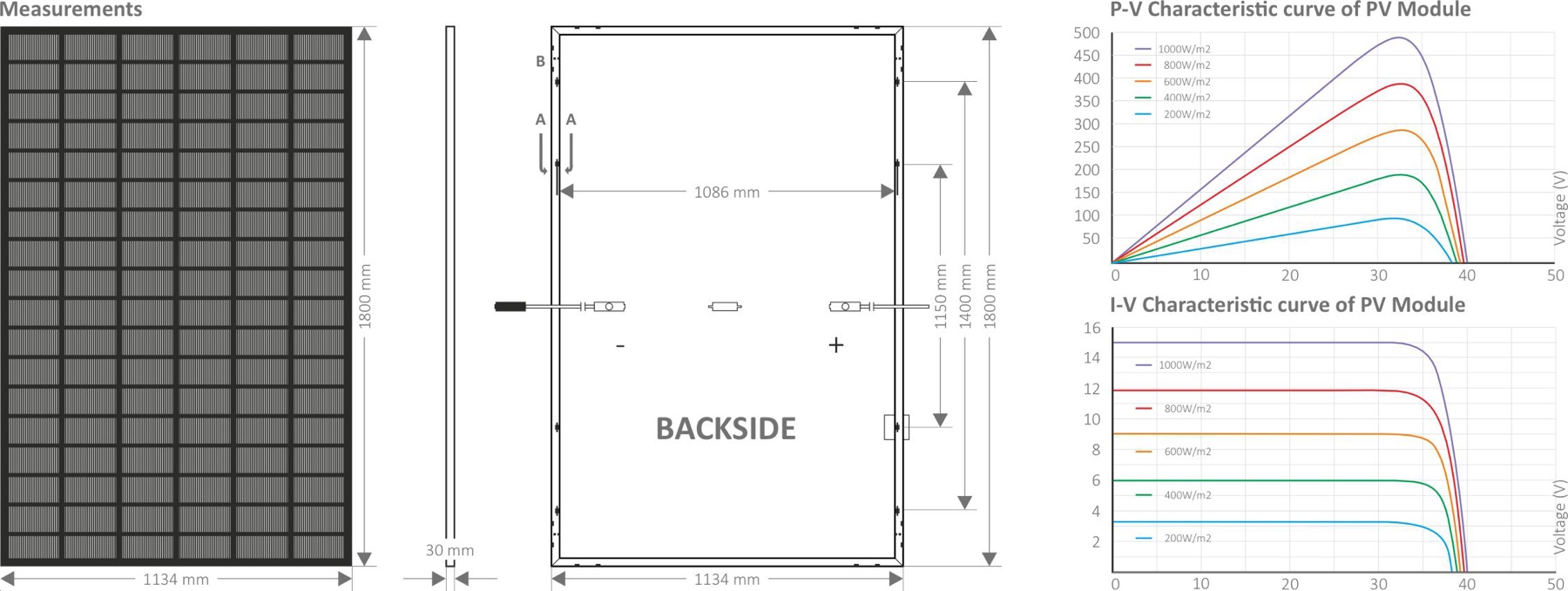
* By applying the Tenka Nanotech layer, 15/20 watts more power is generated compared to the standard cell.
(1) Measurement tolerances: Pmax (± 3%). Isc & Voc (± 3%) - Module type 0/+5W
(2) STC (standard test condition): Transmittance 1000 W/m2. Cell temperature 25°C. BIN 1.5
(3) NMOT (nominal temperature of the operating module): Passage 800 W/m2. NMOT. Ambient temperature 20°C. BIN 1.5. wind speed 1m/s
Errors and omissions excepted. Illustrations may vary

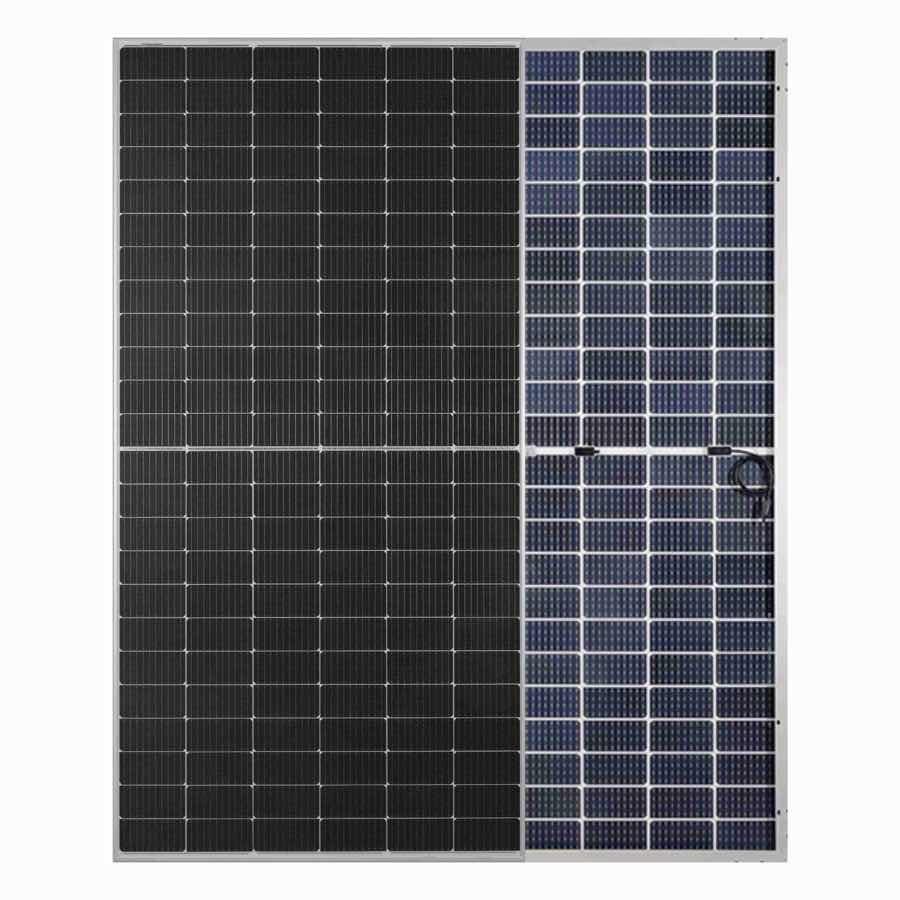
| Technology: | HC-Mono, N-Type, TOPCon, Nanotech Coating |
| Performance: | 620/625/630/635 Watt |
| efficiency: | 22,95-23,51 % |
| Cells: | 132 (6*22) |
| Bifacial: | Yes, dual glass |
| Frame color: | silver |
| Front side: | 2 mm glass |
| Reverse side: | 2 mm glass |
| Dimensions: | 2382*1134*30 mm |
| Guarantee: | 30 years |
| Technology: | HC-Mono, N-Type, TOPCon, Nanotech Coating |
| Performance: | 620/625/630/635 Watt |
| efficiency: | 22,95-23,51 % |
| Cells: | 132 (6*22) |
| Bifacial: | Yes, dual glass |
| Frame color: | silver |
| Front side: | 2 mm glass |
| Reverse side: | 2 mm glass |
| Dimensions: | 2382*1134*30 mm |
| Guarantee: | 30 years |
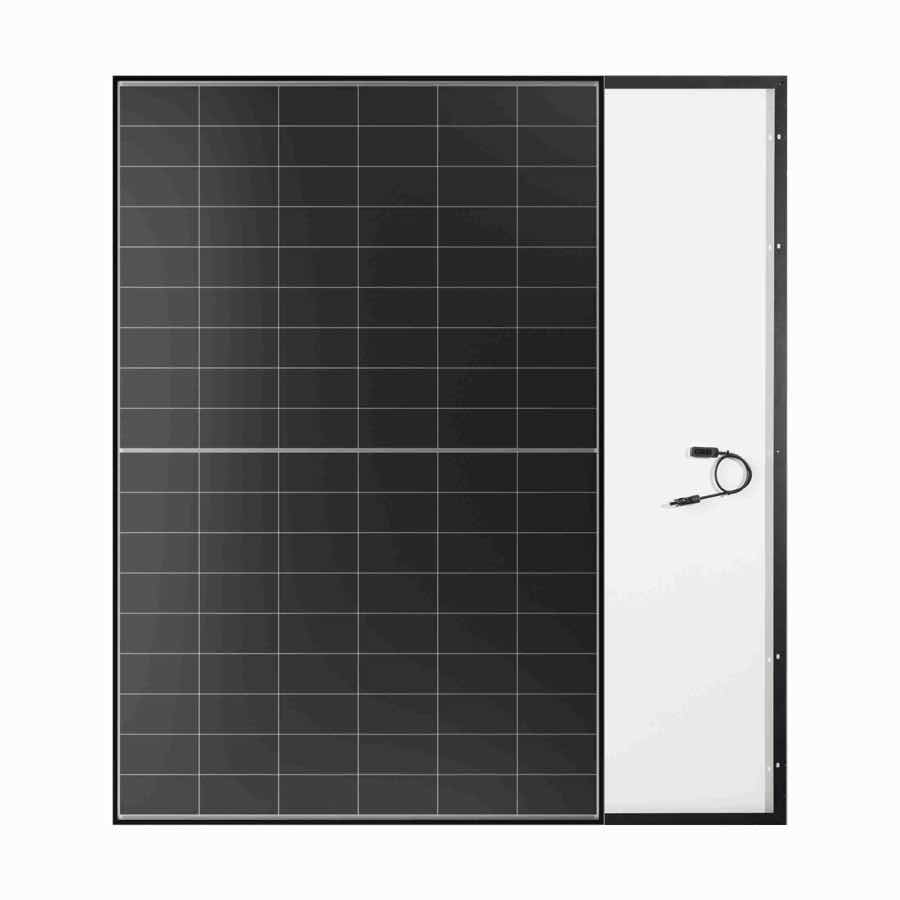
| Technology: | HC-Mono, N-Type, TOPCon, Nanotech Coating |
| Performance: | 470/475/480/485 Watt |
| efficiency: | 23,02 - 23,76 % |
| Cells: | 108 (6*18) |
| Bifacial: | No |
| Frame color: | Black |
| Front side: | 3.2 mm glass |
| Reverse side: | Foil white |
| Dimensions: | 1800*1134*30 mm |
| Guarantee: | 30 years |
| Technology: | HC-Mono, N-Type, TOPCon, Nanotech Coating |
| Performance: | 470/475/480/485 Watt |
| efficiency: | 23,02 - 23,76 % |
| Cells: | 108 (6*18) |
| Bifacial: | No |
| Frame color: | Black |
| Front side: | 3.2 mm glass |
| Reverse side: | Foil white |
| Dimensions: | 1800*1134*30 mm |
| Guarantee: | 30 years |
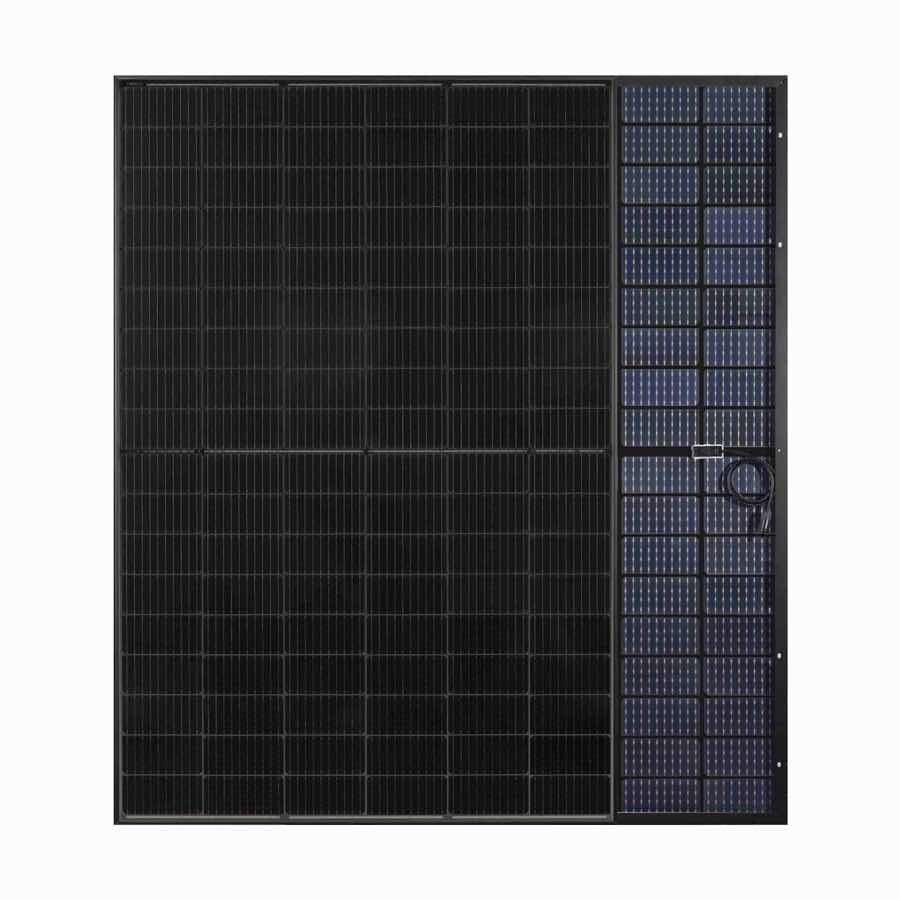
| Technology: | HC-Mono, N-Type, TOPCon, Nanotech Coating |
| Performance: | 470/475/480/485 Watt |
| efficiency: | 23,02 - 23,76 % |
| Cells: | 108 (6*18) |
| Bifacial: | Yes, dual glass |
| Frame color: | Black |
| Front side: | 2 mm glass-glass |
| Reverse side: | black mesh |
| Dimensions: | 1800*1134*30 mm |
| Guarantee: | 30 years |
| Technology: | HC-Mono, N-Type, TOPCon, Nanotech Coating |
| Performance: | 470/475/480/485 Watt |
| efficiency: | 23,02 - 23,76 % |
| Cells: | 108 (6*18) |
| Bifacial: | Yes, dual glass |
| Frame color: | Black |
| Front side: | 2 mm glass-glass |
| Reverse side: | black mesh |
| Dimensions: | 1800*1134*30 mm |
| Guarantee: | 30 years |
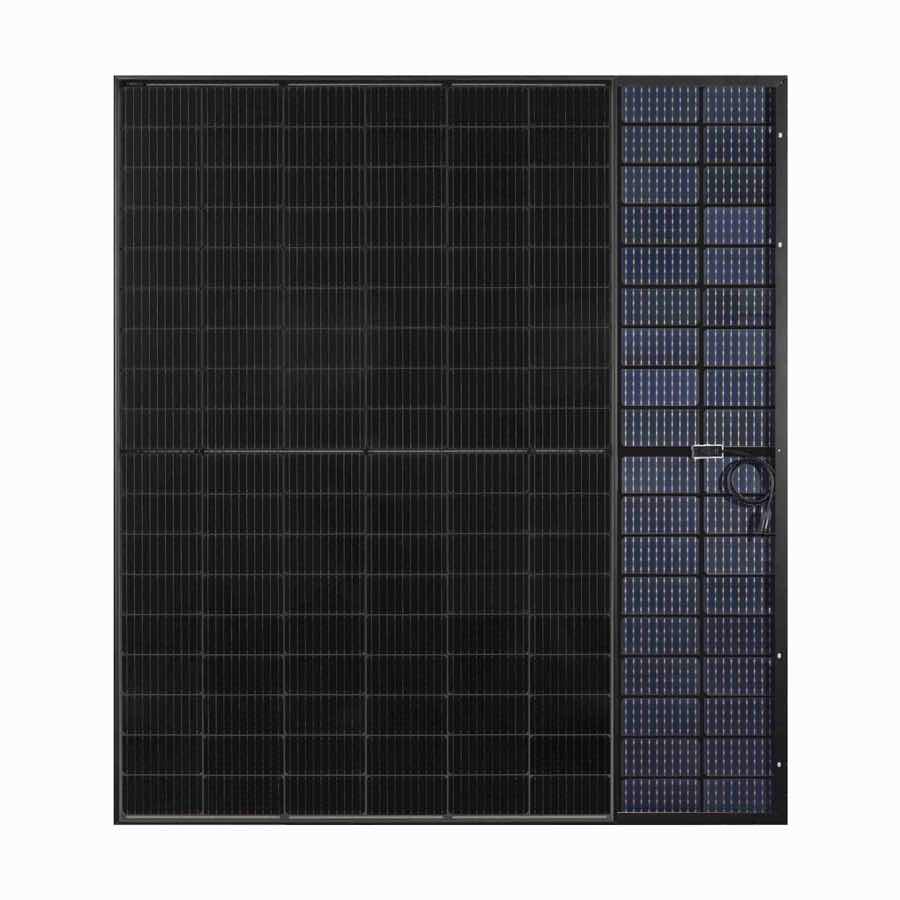
| Technology: | HC-Mono, N-Type, TOPCon, Nanotech Coating |
| Performance: | 450/455/460/465 watts |
| efficiency: | 22,52 - 23,27 % |
| Cells: | 108 (6*18) |
| Bifacial: | Yes, dual glass |
| Frame color: | Black |
| Front side: | 2 mm glass-glass |
| Reverse side: | black mesh |
| Dimensions: | 1762*1134*30 mm |
| Guarantee: | 30 years |
| Technology: | HC-Mono, N-Type, TOPCon, Nanotech Coating |
| Performance: | 450/455/460/465 watts |
| efficiency: | 22,52 - 23,27 % |
| Cells: | 108 (6*18) |
| Bifacial: | Yes, dual glass |
| Frame color: | Black |
| Front side: | 2 mm glass-glass |
| Reverse side: | black mesh |
| Dimensions: | 1762*1134*30 mm |
| Guarantee: | 30 years |
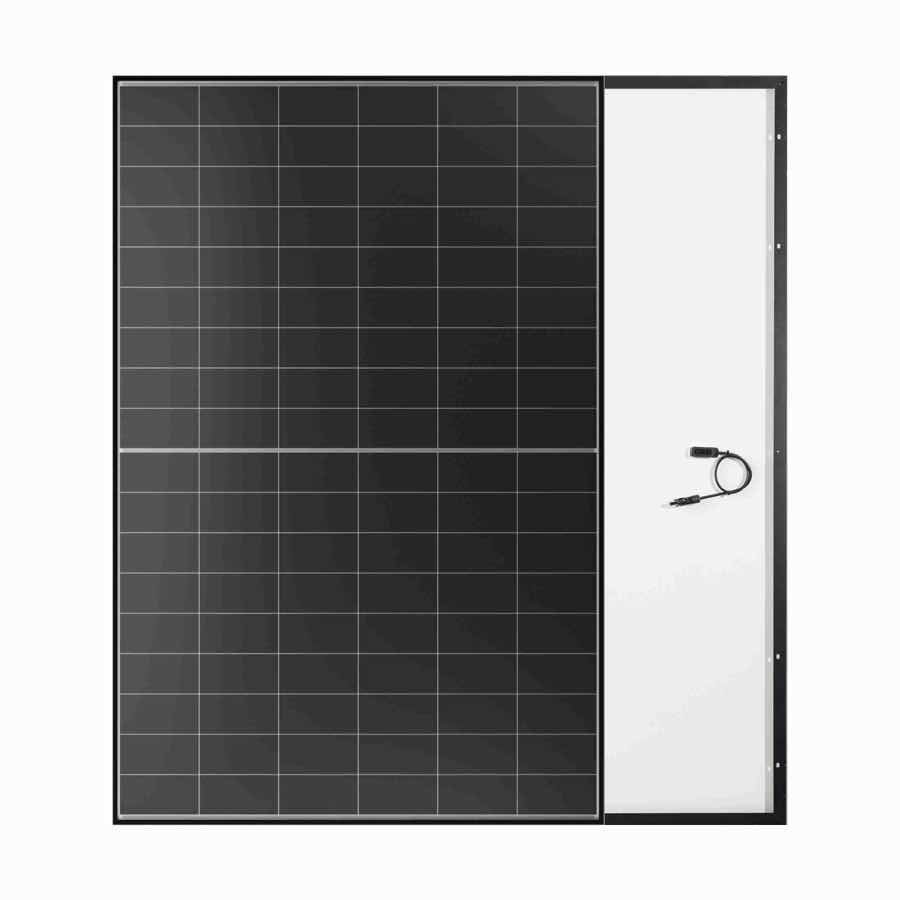
| Technology: | HC-Mono, N-Type, TOPCon, Nanotech Coating |
| Performance: | 450/455/460/465 watts |
| efficiency: | 22,52 - 23,27 % |
| Cells: | 108 (6*18) |
| Bifacial: | No |
| Frame color: | Black |
| Front side: | 3.2 mm glass |
| Reverse side: | Foil white |
| Dimensions: | 1762*1134*30 mm |
| Guarantee: | 30 years |
| Technology: | HC-Mono, N-Type, TOPCon, Nanotech Coating |
| Performance: | 450/455/460/465 watts |
| efficiency: | 22,52 - 23,27 % |
| Cells: | 108 (6*18) |
| Bifacial: | No |
| Frame color: | Black |
| Front side: | 3.2 mm glass |
| Reverse side: | Foil white |
| Dimensions: | 1762*1134*30 mm |
| Guarantee: | 30 years |

| Technology: | HC-Mono, N-Type, TOPCon, Nanotech Coating |
| Performance: | 670/675/680/685/690 Watt |
| efficiency: | 21,57 - 22,21 % |
| Cells: | 132 (6*22) |
| Bifacial: | No |
| Frame color: | silver |
| Front side: | 3.2 mm glass |
| Reverse side: | Foil white |
| Dimensions: | 2384*1303*35 mm |
| Guarantee: | 30 years |
| Technology: | HC-Mono, N-Type, TOPCon, Nanotech Coating |
| Performance: | 670/675/680/685/690 Watt |
| efficiency: | 21,57 - 22,21 % |
| Cells: | 132 (6*22) |
| Bifacial: | No |
| Frame color: | silver |
| Front side: | 3.2 mm glass |
| Reverse side: | Foil white |
| Dimensions: | 2384*1303*35 mm |
| Guarantee: | 30 years |

Exclusive cooperation with Ariel RE/LLOYDS, a leading global provider of warranties for photovoltaic modules
Industry-leading warranty: Unique 30-year warranty on product and performance.

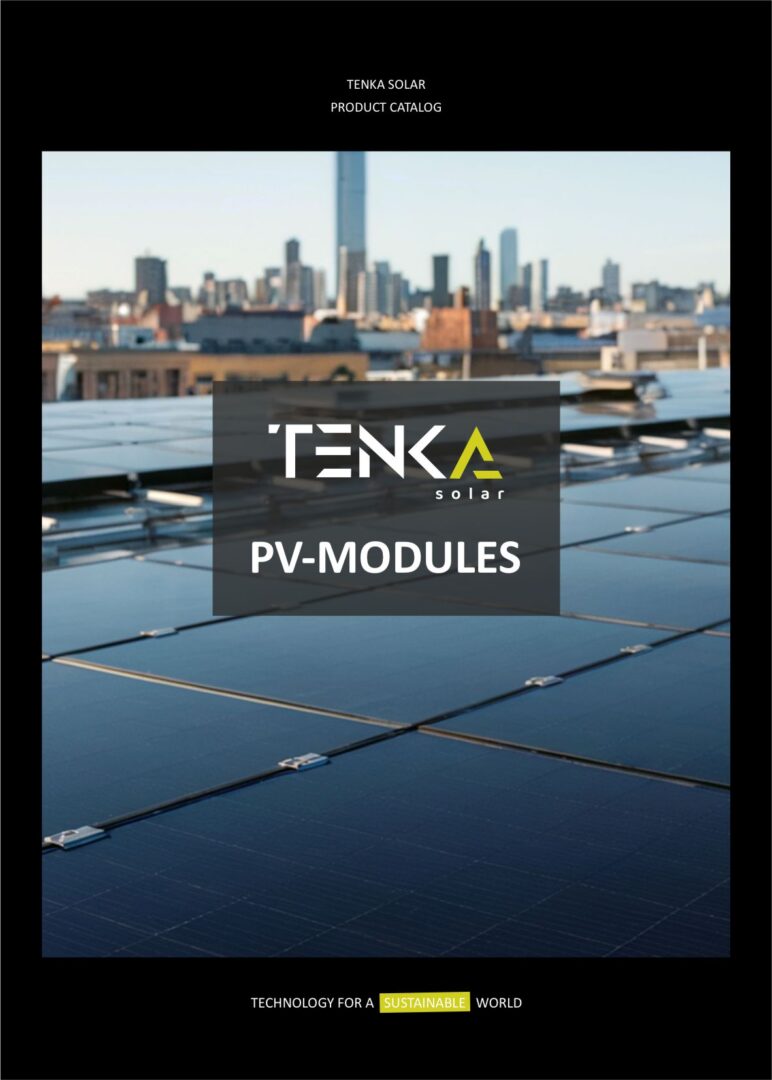
Tenka Orion technology redefines efficiency in photovoltaics. At its heart is the patented Nanotech coating, which enables an exceptionally high light yield thanks to millions of tiny prisms on the cell surface. Even weak or diffuse light is efficiently captured and converted into electricity - a clear advantage in changing weather conditions or limited light incidence.
Tenka Orion modules achieve measurably higher energy yields than conventional modules, particularly at off-peak times and when the sky is overcast. This technology maximizes the energy yield per square metre and makes roofs with limited space economically viable. At the same time, it reduces installation costs as fewer modules are required for the same output.
The combination of nanotechnology and high-quality cell architecture makes Tenka Orion an ideal solution for all areas of application - from private house roofs to large open-space systems. The optimized use of light noticeably extends the daily generation time, which creates significant additional yields, especially in the morning and evening hours.
Tenka Orion technology also impresses with long-term use: low degradation, high material quality and constant performance ensure long-term investment security. Tenka Orion modules thus set new standards for sustainable and powerful PV systems - both technically and economically.